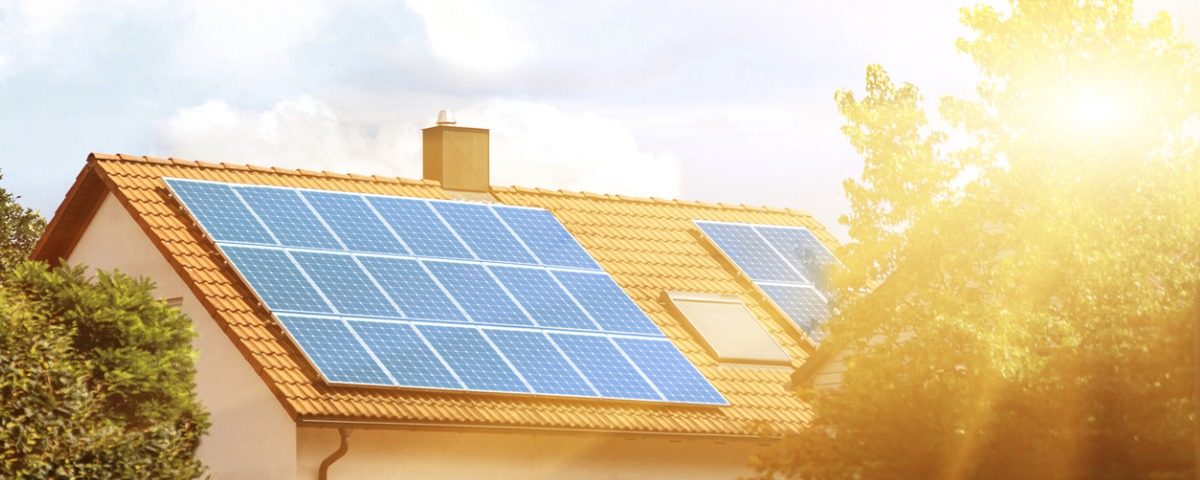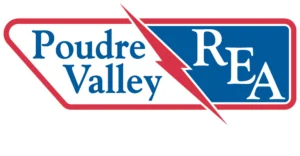Poudre Valley REA is committed to helping our members find affordable, reliable, and safe energy options. Here are some answers to frequently asked questions we receive to help you evaluate the risks and benefits of rooftop solar and help you find an energy solution that is right for you.
Q: Is rooftop solar right for me?
A: Maybe! Every member has different energy needs. To see if rooftop solar is right for you, ask yourself:
- How much you pay for electricity;
- How much electricity you use;
- If your roof can accommodate solar panels;
- If there are any state & local incentives for solar development;
- & who your rooftop solar provider is.
Q: Is my house suitable for a rooftop solar array?
A: Maybe! First check:
- Which direction your roof faces;
- If your roof is shaded;
- If your roof needs repairs/replacement;
- If there are other energy efficiency methods available;
- And if your community has restrictions.
Q: Can I still get the benefits of solar if I don’t live in a house or if my house isn’t suitable?
A: Yes! At PVREA, you can be a part of our community solar farm through our community solar program.
Q: Where does my solar power go?
A: Directly to you first! Your PV array is connected to your home’s electrical system. The power from your array injects into your electrical system and powers the home. Any extra power that the home doesn’t need is sent to the PVREA grid through the utility meter.
Q: How does NET metering work with PVREA?
A: With solar credits! We keep track of how many kilowatt-hours (units of power) travel from the electric grid to your home and how many kilowatt-hours travel from your home to the grid. PVREA credits your utility account for the kilowatt-hours from your PV array that are passed through the utility meter to the electric grid. Those credits are used to cover electric usage by your home that is incurred when the solar array is not producing, such as at night or anytime your home is using more electricity than your solar array is generating. If/When the solar credits are depleted, you will be charged the standard rate for kilowatt-hours used.
Q: Will solar panels provide electricity in the event of an outage?
A: Not without battery backup. A grid-tied solar array without batteries will shut down as a safety feature during an outage. The possibility of back feeding electricity to the grid with solar power is dangerous to workers and the public, so each solar system is required to have a rapid shutdown function that de-energizes the array when there is an electric ‘outage’ on the grid. Batteries can allow you to keep producing solar power during an outage if they are configured in a way that allows your home to be completely isolated from the grid during an outage.
Q: Will my electricity be free once I install solar panels?
A: Not entirely. PVREA members can have solar PV panels and interconnect to our electrical distribution system with a net meter and interconnection agreement. Solar panels do not provide electricity 24/7, so your home still needs electricity from PVREA. Your monthly PVREA bill will still have the Facilities Charge line item to cover the operating and maintenance cost of having electricity available for your home.
Q: Is it true that I won’t have a monthly bill?
A: No. As long as you are connected to our grid, you will always have a bill for the facilities charge and any taxes, franchise fees, etc., plus any usage that your PV array didn’t cover. The facilities charge is a flat monthly fee charged per meter, and it is not dependent on how much energy you use. PVREA members all need a reliable energy grid, so members all share in the costs of building and maintaining our local electric grid through the facilities charge.
Q: Does PVREA bank unused PV credits for upcoming months?
A: Yes! We will ‘bank’ any unused credits from your PV array to offset kilowatt-hour usage in upcoming months. This process happens automatically.
Q: Does PVREA buy back unused PV credits?
A: Yes! Your solar credit bank is managed by PVREA on an annual basis from April 1st through March 31st of the following year. At the end of each March, PVREA purchases unused credits from your PV array. This allows homeowners to utilize extra credits generated in the summer, when the solar array is producing the most energy, for winter months, when the array is not producing as much energy.
This ‘buy back’ process is mandatory. To see current buyback rates, view our rates, fees, & charges.
Q: Why does the app from my inverter(s) show more power produced than PVREA gave me credit for?
A: Your solar inverters report total production from the PV array. That power goes directly into your home’s electrical system. The home takes what it needs and sends extra power back to the grid. PVREA meters will never see complete production from the PV array, only the extra power that was sent to the grid through the utility meter.
Q: What should I know before I buy a rooftop solar array?
A: If you are purchasing a rooftop solar array, be sure to ask:
- What is the total installed (turnkey) cost of the system?
- What is the payback period? What are the assumptions underlying that estimate?
- Will I need to finance the array?
- Who gets the tax credits (the “renewable energy credit”)?
- Will I receive “free” electricity once the panels are paid for?
- Does the company offer warranties on panels AND inverters?
- What are the details of the service contract?
Q: What should I know before I lease a rooftop solar array?
A: If you are leasing panels in a rooftop array, be sure to ask:
- What is the upfront cost of the system?
- Are there other customers in the vicinity with comparable systems? How much electricity are their systems producing?
- Who gets the tax benefit (the “renewable energy credit”)?
- Can the lease be transferred if I sell the house?
- Does the lease company have the right to run a credit check?
Q: As a consumer, how can I protect myself and my investment?
A: Research! When you make the decision to invest in residential solar, you are making a significant financial investment. Be sure to do your research on the company. Colorado State University Energy Institute also has great tools and calculators to help you.
Good questions to ask:
- Are the installers North American Board of Certified Energy Practitioners (NABCEP) Solar Photovoltaic (PV) Electric trained and certified?
- When was the company established, and how much solar has it installed to date?
- Can the company provide a list of the projects and references for
- Are the installers accredited with the Better Business Bureau? If so, what is their rating?
Q: How should I size my solar array if my home is new construction?
A: Use finished square footage! For new residential construction, members may apply for up to 3-kilowatt hours per finished square foot. Additional capacity may be granted on a case-by-case basis for additional electric load, such as electric heat (baseboard, cove, heat pumps), electric vehicles, or other unique electric loads. Members should remember that any overproduction as of the April 1 annual true-up date will be credited per the Tariff NP (Net Metering). See our current rates, fees, & charges to learn more.
Commercial or other use will be evaluated on a case-by-case basis dependent upon forecasted electricity consumption.

